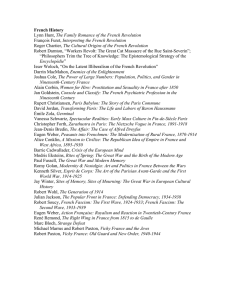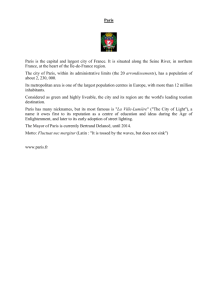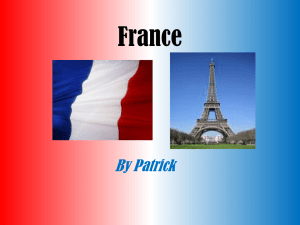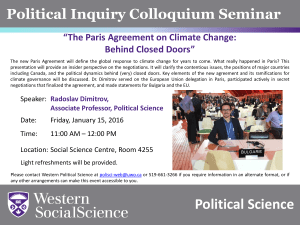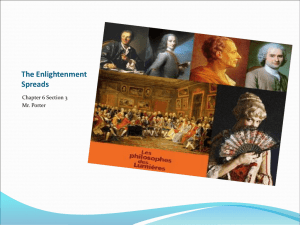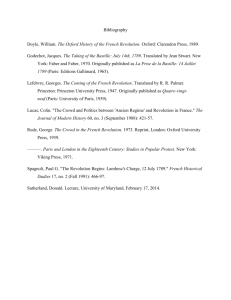The Paris of the Philosophes
advertisement
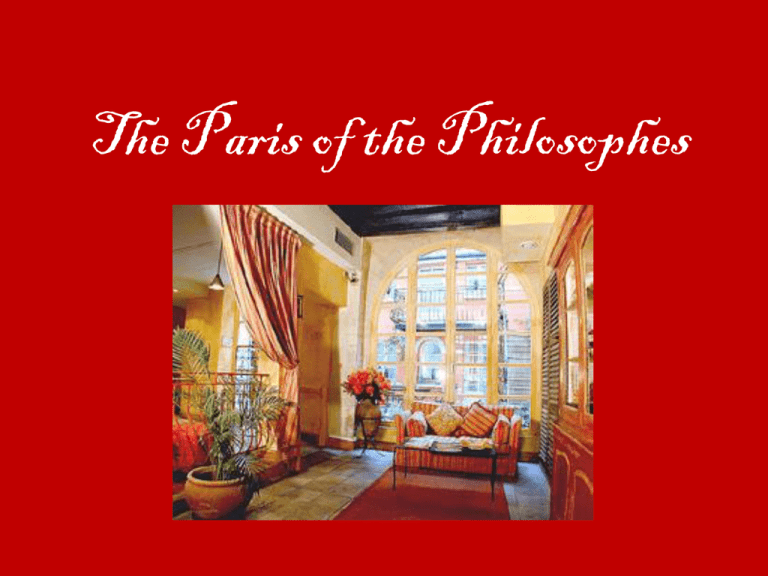
The Paris of the Philosophes The Significance of Paris Paris was the center of all aspects of French (and, in many cases, European) life—intellectual, artistic economic, bureaucratic, judicial, social. (pg. 870) Paris was the center of the European art market (pg. 874) Population of Paris (pg. 870): 560,00 in 1730 (2nd only to London) 650,000 in 1789 (increase of approx. 20%) The Parisian Salon • Developed during the time of Louis XIV • Became the center of Parisian/French intellectual society • Hostesses would often invite philosophes • Perhaps one hundred hostesses conducted salons on regular days of the week. (pg. 875) • Age of Rococo art (pg. 877) Rococo Art Jean-Honore Fragonard: The Swing Paris and the Scientific Revolution • Discoveries of the Scientific Revolution showed that the universe was governed by laws, that it could be understood, and that everything in it was related. • And it was…in the scientific revolution [the Enlightenment thinkers saw] proof of their optimism in the future achievements of the human understanding when working on the physical and the human universe. (pg. 886) Paris and the Enlightenment Thought on Justice: Punishment…should be made to fit the crime, an extraordinary idea at a time when the death penalty was dealt out for minor theft. (pg. 889) Thoughts on Religion: Voltaire: Ecrasez l’infâme! (Crush the infamous thing!) God as a “divine watchmaker” (pg. 888) The Encyclopédie (1751-1772) • “Greatest work” of the Enlightenment • Primary editor was Denis Diderot (and Jean d’Alembert) The figure in the centre represents truth — surrounded by bright light (the central symbol of the enlightenment). Two other figures on the right, reason and philosophy, are tearing the veil from truth. Enlightened Despots • Catherine the Great (Russia), Joseph II (Austria), Frederick the Great (Prussia) • Accomplishments (pg. 894) • Problems with Reform (pg. 895) Paris on the Eve of Revolution • The Three Estates • The Bourgeoisie • The “Sans-Culottes” “Culottes” “SansCulottes”
